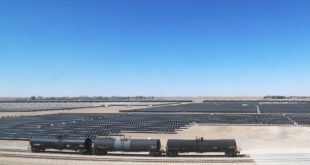Solar energy systems are becoming an excellent and an increasingly attractive renewable source of energy for private homes. This could be attributed to three basic causes; namely, the growing costs of conventional energy, the falling prices of improved solar panels for homes as well as incentives offered by governments that make solar energy an attractive choice.
In America, more than 10 thousand homes and businesses are powered solely by solar panel systems. Besides, several hundred thousand homes and businesses use solar energy systems to partially satisfy their energy requirements. That results in substantial savings on electricity bills. Subsequently, the use of non-renewable resources (fossil fuels, etc.) is decreased, resulting to less environmental pollution.
The cost of installation for a home of a typical family can be $18-20 K if carried out by a professional installation company. This high cost prevents people from using solar energy systems. However anybody can save on installation costs by getting tax credits and state rebates. Also,you can do it yourself, and then the cost would only be about 30 % before tax credits and rebates.
You can have two choices: a stand-alone system which needs a battery to function properly or a system that is tied to the grid.
A worthwhile improvement to your home is to convert to grid-intertied solar panels. As always, planning ahead is the main prerequisite of successful conversion.
First, estimate the amount of energy you need based on past history. You have to pick the right size of your solar panels. An oversized energy system will generate more energy which you could sell to the power company, but you can only get credit for it and not cash.
After that, determine whether your home is suitable for a solar system. These factors are to be considered:accounted for: available space on the roof, house location and climate. A rule of thumb for estimating needed roof space is 80 to 100 square feet per kW. A building should face south for the solar energy system to be efficient, and there should be no objects that may get in the way of sunlight.
Though it is possible to mount the solar units on poles, panels are usually mounted on roofs. With the help of stainless steel bolts, the mounts are attached to roof rafters. The solar panels are then attached to the supports.
Solar panels are available in the market. There are suppliers who sell their panels on the Internet, but it is not recommended to purchase the kits from them unless you are an experienced DIY solar panel kit builder.
Typical set of hardware you need for a stand-alone system without a battery that is tied to the grid includes: solar panels, power inverter, power meter, roof mounts, a couple of heavy duty safety switches, wires and conduits. A DIY kit for a 1-kW system would cost a little over $3,000.
If you don’t have prior experience in this area, you should choose a reputable supplier who is known for high quality service. It is prudent to consider DIY kits with accompanying installation manual that at least has a good number of illustrations. The supplier should preferably have contact telephone number, and better yet, could provide an engineer in case you run into a problem with installation. Or if you are lucky enough to have a friend who is experienced in installing home solar energy systems, then ask him to lend a hand in the procurement of the hardware as well as in the installation.
Many have proven that solar energy can save one both money and the Mother Nature. With availability of improved, affordable solar panels for homes and businesses, solar electricity is the best option for most of us, so go back to that home improvement project: install a home solar power unit.
 Alternative Energy HQ solar power for homes, wind energy, and bio fuel issues
Alternative Energy HQ solar power for homes, wind energy, and bio fuel issues







the cost of solar energy is very high for middle class in india.
i.e $18-20K. If it can be reduced to $3-5K then we can think for the same.
the cost of solar energy is very high for middle class in india.
i.e $18-20K. If it can be reduced to $3-5K then we can think for the same.